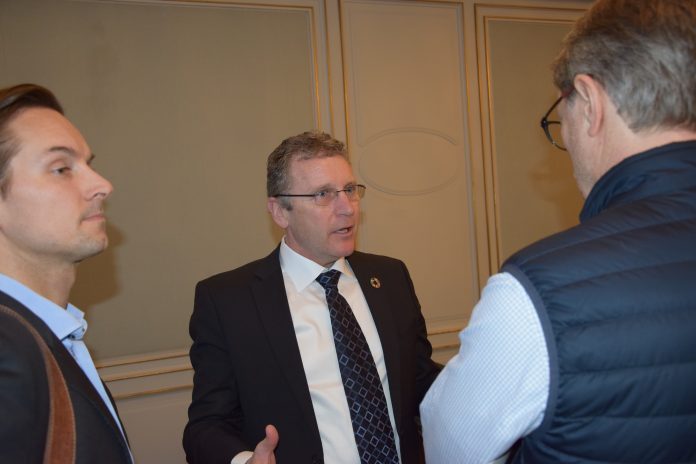“We are on the right track in all regions,” said Grieg Seafood CEO Andreas Kvame.
The Oslo Stock Exchange reacted immediately sending Grieg Seafood up ten per-cent after Wednesday’s quarterly presentation at the Hotel Continental in Oslo. Although CEO Andreas Kvame would have liked the results to be better in Shetland, he spotted good progress in all other regions.
“There is progress in Shetland too, so we see a light in the tunnel there,” said Kvame to SalmonBusiness.
Kvame said that 2018 was the second best year in Grieg Seafood’s history and the company never before harvested as much fish as last year.
“75,000 tonnes is a record. And we have a record high turnover,” he said.
Read more: Grieg’s earnings went up 84% this quarter
When SalmonBusiness informed Kvame about the stock market development, he was surprised.
“The stock is that much up? Well, we went down a bit yesterday, and many feared that we have the same challenges as NRS (Norway Royal Salmon) in the south, but that it is so much up is very fun,” he smiled.
Looks great upside in the market
Grieg Seafood had an EBIT of EUR 1,51 per kilo this Q4. The company expects to harvest 82 000 tonnes of fish in 2019, an increase of ten percent.
Kvame is not concerned about whether the market is capable of withstanding a lot of growth.
“We are sure the market is there. If we get the same effect in North America as we did in Germany at the time when we went from frozen to fresh fish then we would need a brand new Mowi to cover that demand,” said Kvame.
Grieg Seafood also stated that they increased their guidance for growth in 2019 from 3-5 per-cent to 4-6 percent.
Reduces production of smolt internally in Shetland
Grieg Seafood is still struggling with high mortality rates in Shetland and has put in place a number of measures to try to improve the situation.
“One of the things we did last year was to make a proper revision both internally and externally of our hatchery plants because we must be sure that smolt starts with a good starting point every autumn,” Kvame explained.
He said that they realise now that they pushed the plant too far and will reduce the utilisation of its capacity.
“We will continue to set out the same number of smolt, but the capacity of the plant will be reduced by 75 percent. The rest will be brought in externally,” he explained.
On the positive side, Grieg says that it seems that they have better control of gill disease in the area. And Kvame said he believes they will achieve the goals they have set for Shetland in 2020. “We also have reduced the number of sites and will only use the best locations in the future,” he added.

